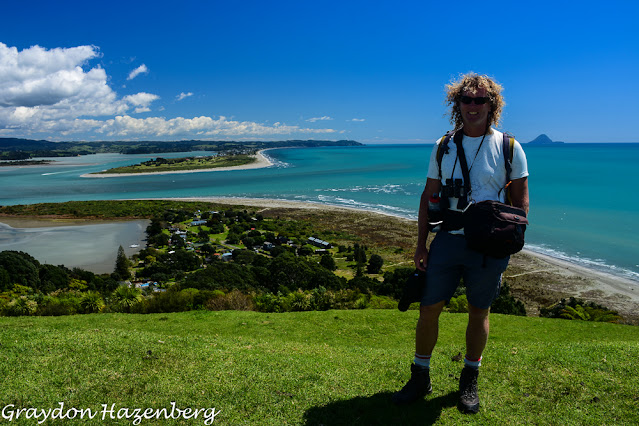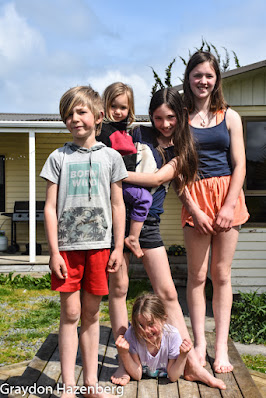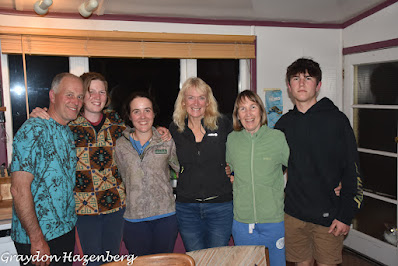 |
| Terri and I dining out in Lipah |
Te Anau, New Zealand
It's once again the end of a year, and time to look back over the highs and lows of the past 365 days. These summations seem to come with greater and greater frequency as I careen down the declining side of life, but 2021 seemed to pass with greater speed than most years because it was a full year of plans altered, disrupted and complicated by covid-19. There's some travel to look back upon, but much, much less than would usually be the case for a year spent being economically inactive. Terri and I should have been driving around Africa in Stanley, but that didn't happen. Having said that, we did endeavour to make the most out of a frustrating travel situation.
The year began in Bali, where Terri and I had fled in late November of last year as the Indonesian border opened up a crack. Lipah, the little bay near better-known Amed, made an ideal base for us to wait out a pandemic. Terri had the foresight and wisdom to buy a house overlooking Lipah Bay over a decade ago, and it is now the closest thing we have to a home base. We had made some improvements to the house back in 2017-18 when we lived there for a number of months, but this time around we made some more substantial alterations. Over the months we put in a new roof (the old one had been so thoroughly nibbled by termites that it was a minor miracle that it hadn't fallen in on top of our heads); put in a few bits of strategic concrete to reinforce the garden and make our outdoor shower less muddy underfoot; installed a workout bar for pullups; got new and much more comfortable beds; improved our outdoor diving gear area; touched up our outdoor kitchen; vastly improved our water system; and completely redesigned our garden area, adding a somewhat grandiose entrance gate topped with a bougainvillea arch and even planting some grape vines. By the end of our various improvements, the house felt much more liveable and home-like than ever before, and it was hard to tear ourselves away from it in early August.
 |
Lovely silhouettes and shadows on Gunung Agung
|
The rhythm of life in Lipah was simple and seductive. Three days a week we arose early and worked out faithfully on our pullup bar, using long elastic resistance bands to help us do the pullups that we couldn't do unaided, and then hanging gymnastic rings from the bar to do other exercises. Between that and a set of dip bars that we ordered online, both of us found our upper body strength increasingly very noticeably over the months. I have never had much upper-body strength, but as I get older, I think that this sort of exercise is what my aging body needs.
 |
Paddling near Lipah
|
 |
One of the nearby bays that we regularly visited by kayak
|
Other mornings found us up running along the undulating headlines and coves of the nearby coastline, or cycling up the improbably steep roads running back from the coast. We bought a sea kayak in January, and immediately wondered why we hadn't bought one years earlier, as it gave us another outdoor activity to do together, one that let us see our nearby coastline from a completely new perspective. Most days at some point we got out swimming and snorkelling in Lipah Bay, saying hello to familiar friends like the pair of leaf scorpionfish that always haunt the same coral bommie in the middle of the bay. We both improved our swimming technique, with first Terri and then I becoming somewhat proficient in the butterfly stroke. It was always a joy to be able to experience so much underwater beauty a one-minute stroll from our house. Of course we also got out scuba diving from time to time, either in Lipah (often at night) or down the coast in the spectacular macro diving mecca of Tulamben with our friend and underwater critter-spotter extraordinaire Komang. We were certainly not lacking in outdoor activities to keep ourselves fit and entertained!
 |
Baby frogfish
|
 |
Unidentia sandramillenae
|
 |
Thecacera sp. nudibranch
|
 |
Another beautiful Goniobranchus sp. nudibranch
|
 |
Doto greenamyeri (or the Doto Donut nudibranch)
|
When I wasn't running, cycling, paddling or bobbing around outdoors, I was putting the finishing touches on my first book, Pedalling To Kailash. If you haven't read it yet, there's still time. (Buy yourself an entertaining Christmas present!) It's been a learning experience, with lots of reviews from satisfied and entertained readers, but far fewer sales than I had dreamed of. I am still trying to get more people to buy the book, although I have to conclude that most money and time spent marketing a book ends up being for nought. The plan is still to try to get an agent and an actual commercial publisher to bring my second book, Silk And Solitude, to market backed by the marketing heft of a publishing house used to publicizing books. Stay tuned in 2022! And profound thanks to all of you who have read the book, given me feedback and (importantly) written reviews on Amazon, GoodReads, LibraryThing or Google Books.
 |
Publication Date on February 28th
|
 |
Me holding the paperback version for the first time
|
Another addition to our Lipah life consisted of a stray female cat (Fantine, or Mama Cat) whom we started feeding in December and who moved in in January when she was about to give birth. She produced a single ginger kitten whom we dubbed Ginger Bear, but within a week the kitten disappeared. We were sad, certain that the little creature had been killed by a neighbourhood tomcat or eaten by a snake. A week afterwards, during a torrential downpour, however, Mama disappeared outside and returned with a bedraggled kitten in her mouth. From that point on the two of them lived at our house, entertaining us with their antics. Ginger Bear grew from being a helpless pile of fluff into a strong, kind-hearted funny cat, despite the constant thrashings administered by Mama who clearly subscribed to the school of Tough Love. Terri and I spent many happy moments watching the two of them fight and then make up by snuggling next to each other for a nap. Neither Terri nor I had owned a pet for decades, and it really made us happy to have these two felines light up our lives.
 |
| A newly-born Ginger Bear |
 |
| Our tiny bundle of ginger joy |
 |
| Ginger Bear getting used to walking |
 |
Mama Cat beating sense into Ginger Bear
|
 |
Terri and Ginger Bear
|
Most of the time we stayed in Lipah, but we did get away occasionally to other parts of Bali. We combined a visa run to Singaraja with a few days of diving and relaxing in the muck-diving area of Puri Jati in late January. We took advantage of a cheap deal to cycle north up the coast to a little resort in Tejakula for a two-night getaway. A second visa run in May gave us a chance to explore the interior of the island near scenic Mt. Batur and its huge caldera. I returned to the Batur area a month later by bicycle to get some exercise. Mostly, however, we were content to live quietly and enjoyably in Lipah.
 |
Terri on the beach at Tejakula
|
Our biggest excursion from Bali was a trip to Flores in June to see the famous Komodo dragons. I had visited Komodo back in 1996, but Terri had never seen them and was keen to make up for this omission. For her birthday we booked what was promised to be a swanky cruise around Komodo, Rinca and other picturesque island. Reality proved to be a bit less than advertised, with the clients on our boat being largely Indonesians obsessed with Instagramming every spot on the itinerary, with drones and carefully selected outfits, and the crew keener on ear-splitting karaoke and thumping bass than on the natural scenery. It made us glad to escape back to Lipah without catching covid, once we had seen the dragons (as impressive as I remembered them), mantas and beautiful scenery.
 |
A Komodo dragon out for an afternoon stroll
|
 |
Terri, the dragon and I
|
 |
Terri and manta ray
 | Manta ray near Komodo
 | Maree snorkelling near Komodo
|
 | Me snorkelling near Komodo
|
|
|
 |
A stunning sunrise on our Komodo trip
|
 |
On a pink-sand beach near Komodo
|
As idyllic as our existence in Lipah was, there were forces pushing us towards New Zealand. I had spent a lot of time, effort and money to procure a partner visa allowing me to breach the border defences that NZ had erected against covid, and it was going to expire in early September if I didn't enter the country. Terri managed to get coveted and rare spots in the Managed Isolation and Quarantine system, and we booked flights. As July progressed, however, covid numbers in Indonesia began to surge and countries like Singapore and New Zealand erected new barriers; we would have to spend at least three weeks in another country before we would be allowed to transit through Singapore airport and continue on to New Zealand. So we scrambled to change MIQ dates, booked flights to Turkey (one of the few countries that travellers from Indonesia were allowed to enter at that point) and set off in August for Ankara.
I wrote a long (perhaps overly long!) blog post about that trip which you can read here. The short version is that it was a fabulous journey through ancient history (some of it very ancient indeed!) and scenery. It was my fourth visit to Turkey, and it likely won't be my last. It was great to be out on the open road again, and it was hard to pry ourselves away to catch our flight to Auckland on September 3rd.
 |
| Cuneiform tablet, Ankara |
 |
| Hattusa |
 |
| Hattusa |
 |
| Hittite relief, Kayalipinar |
 |
| Kackar Mountains |
 |
| Valley of the Roses, Cappadocia |
 |
| Valley of the Roses, Cappadocia |
 |
| Hot air ballooning, Cappdocia |
 |
| Cappadocian ballooning |
 |
| Sultanhani caravansarai |
 |
| Talking with the experts at Acem Hoyuk |
 |
| Replicas of wall paintings at Catal Hoyuk |
 |
| Midas Memorial |
 |
Hanging out with the Phrygians
|
Our time in New Zealand started with two weeks in MIQ, spent in a fancy five-star hotel in central Auckland. It was a surprisingly comfortable gilded cage, with three top-notch meals a day, satellite TV, internet and a pile of books on my Kindle to keep me occupied. When we were released, it was into a New Zealand's worst outbreak of coronavirus so far, and we couldn't go north of Auckland as we had hoped to do, at least until the weather warmed up. Instead we spent chunks of time in both Hamilton and Papamoa with very accommodating friends of Terri's. We used the time to get vaccinated (something we couldn't do in Indonesia) and to work on our campervan, a Nissan Elgrand that Terri had bought and partially outfitted the year before when she was trapped in NZ by the first wave of the pandemic. We added solar panels, a roof box, a side awning and a tent that hangs under the awning, providing a lot more living space. It took us a while to get used to living out of Edmund, but a few weeks of ambling slowly down the east coast of the North Island, camping beside beautiful shorelines and trying our hands at fishing (unsuccessfully) and gathering shellfish (more successfully) got us used to it. We eventually made our way to Gisborne, Terri's hometown, and sat out an apocalyptic rainstorm that lasted for days and flooded out sections of the city. We picked up speed as we headed south, doing more hiking in the Tararua Range and along the south coast of the North Island, cycling parts of the Remutaka Rail Trail and then taking refuge in Wellington at the home of Terri's sister Karen, where we visited the magical bird sanctuary of Zealandia and got ready for the bigger adventures to come on the South Island.
 |
Atop Mt. Holdsworth
|
 |
Terri on a precipitous slope near Castlepoint
|
 |
Duck family, Lake Tutiru
|
 |
| New Zealand scaup |
We crossed over to the South Island on the ferry at the very end of November, and came quite directly down to Fiordland, in the southwest corner of the island. We were lucky to take advantage of lots of cancellations to get bookings on the Kepler, Milford and Routeburn tracks, iconic multi-day treks that are usually well-nigh impossible to get onto (covid does have its occasional advantages). The trekking has been spectacular, and we are now keen to do many more long walks through the spectacular scenery of this magical part of New Zealand. The plan is to spend at least two more months on the South Island until I (probably; it's so hard to plan anything in advance these days!) go to Switzerland in late March to spend time with my mother, who's living with my sister and her family in my old stomping ground of Leysin.
 |
Kepler Track
|
 |
Whio (blue duck), Milford Track
|
 |
Unusual fungus, Kepler Track
 | Cheeky kea, Milford Track
 | McKinnon Pass, Milford Track
 | Terri and I atop the McKinnon Pass, Milford Track
|
|
|
|
I hope that all of you who are reading this summary of a year spent waiting for the pandemic to end have had your own adventures and accomplishments to look back on. I also hope that 2022 ends up being a more "normal" year in which international travel becomes easier and less painful. I wish all of you Merry Christmas and a Happy New Year!
 |
| Happy on a cruise around Milford Sound, New Zealand |





























































































